Best Copilot+ PC in 2024
Copilot+ PCs are here, and we can help you land the perfect laptop for your needs.

• The list in brief ↴
1. Best overall
2. Best MacBook Pro competitor
3. Best business
4. Best bright screen
5. Best design
6. Best performance
• How to choose
Next-gen AI PCs with the Copilot+ badge have arrived, bringing Qualcomm's Snapdragon X efficiency and performance with advanced AI features in Windows 11. The first wave of Copilot+ PCs was announced on May 20, 2024, and you can now preorder or outright buy the laptops.
Nearly all major laptop manufacturers, including Acer, ASUS, Dell, HP, Lenovo, Samsung, and Surface, have Copilot+ PCs for Windows on ARM. This selection is expected to grow in the coming months — especially when Intel, AMD, and NVIDIA get on board — but there are already a lot of great laptops available.
These are the first devices to get access to Copilot+ features in Windows 11, including Windows Recall, Live Captions, Auto Super Resolution, local AI text and image creation, advanced Windows Studio Effects, and more. If you want a great Windows laptop with cutting-edge AI features, this is the way to go.
We appreciate the wide selection, but finding the perfect Copilot+ PC for your needs isn't always easy. Whether you're a casual user, a student, a professional, a creator, or anyone in between, we've put together this list of the best Copilot+ PCs so far to help you make the right decision.
The quick list
Before we dive into a more detailed breakdown of our favorite Copilot+ PCs, it's worth laying out a quick list of the best hardware. Click through any of our picks for more information.
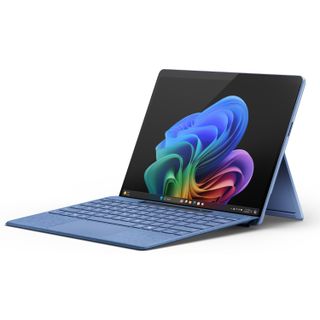
Best overall
The Surface Pro 11 is our top pick for Copilot+ PCs thanks to its awesome 2-in-1 versatility, optional OLED touch display with inking support, and competitive pricing (at least before adding a keyboard and pen).
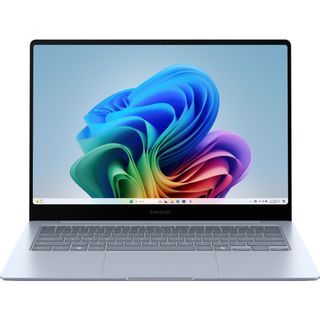
Best MacBook Pro alternative
With its Galaxy AI ecosystem, strong X Elite performance, and impressive 14- or 16-inch AMOLED displays, Samsung's Galaxy Book4 Edge should be an excellent alternative to the MacBook Pro for those who want Windows on ARM.
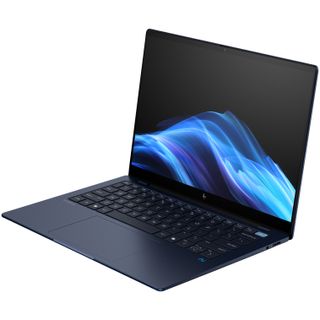
Best business
HP's EliteBook Ultra G1q comes with plenty of perks for professionals, including a subscription to HP Wolf Pro Security, Windows 11 Pro, and MIL-STD 810H durability certifications. It's the best Copilot+ PC for business.
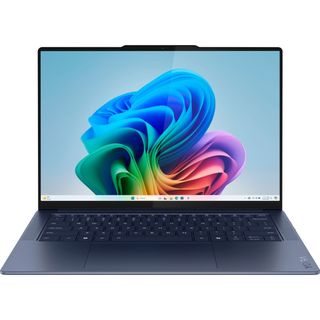
Best bright screen
With a bright OLED touchscreen (up to 1,000 nits), sleek design, quad speakers, and an outstanding keyboard, the Yoga Slim 7x should appeal to plenty of users who want a PC they can use anywhere in any fashion.
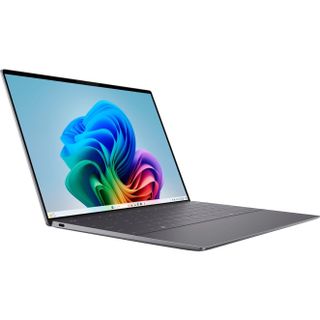
Best design
Dell took its stellar XPS 13 design with a lattice-free keyboard and quad-speaker setup and added Snapdragon X SoCs. It's a laptop you'll likely either love or hate due to the design choices, but in any case, it's one of the best-looking laptops on the market.
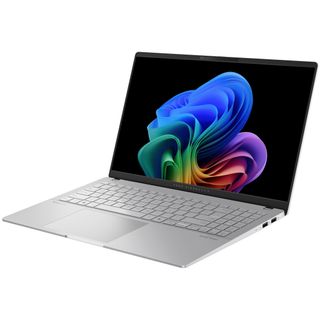
Best performance
The ASUS Vivobook S 15 brings strong 45W X Elite performance, a keyboard with 1.5mm travel and number pad, and a 3K OLED display with a 120Hz refresh rate.
Our favorite Copilot+ PCs in 2024
Why you can trust Windows Central
Let's now get into a more detailed breakdown of what makes these laptops some of our favorite Copilot+ PCs in 2024.
Best overall
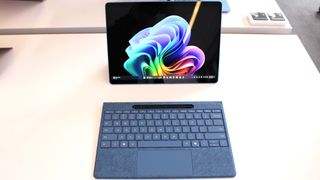
1. Surface Pro 11
Specifications
Reasons to buy
Reasons to avoid
Microsoft's Surface Pro 11 was the first Copilot+ PC revealed to the world on May 20, and it should prove to be the most versatile option for most users. It retains the stellar 2-in-1 design from recent Surface Pro predecessors, with a fold-out stand on the back and a detachable keyboard/touchpad portion. It's as easy to use as a tablet as it is a notebook.
The biggest news surrounding the Surface Pro 11 is likely the inclusion of an OLED touch display. It's the first time that Microsoft has added an OLED option alongside the usual LCD, perfect for anyone who needs deep color and contrast. The display measures 13 inches, it has a boxy 3:2 aspect ratio ideal for a tablet, and it hits a 2880x1920 resolution. A dynamic refresh rate hits up to 120Hz, and inking support is included.
On that note, the new Surface Pro Flex keyboard and Surface Slim Pen are both accessories sold separately. While many older Pro keyboards are compatible with the Pro 11, the new Pro Flex keyboard finally adds wireless connectivity, allowing you to use it when separated from the tablet. A combination Pro Flex keyboard and Surface Slim Pen adds about $450 to the total price, but you can get the keyboard alone for about $350.
Powering the new Surface Pro 11 is either a Qualcomm Snapdragon X Elite (X1E-80) or Snapdragon X Plus (X1P-64) System-on-Chip (SoC). The more powerful X Elite is tied to the OLED display, while the X Plus comes with an LCD display. You can otherwise get up to 32GB of LPDDR5x RAM and up to 1TB of M.2 PCIe 4.0 NVMe solid-state drive (SSD) that can be upgraded after purchase.
If you're looking for 5G connectivity to complement standard Wi-Fi 7, you'll unfortunately have to wait until at least Fall 2024.
See our analysis: Surface Pro 11 vs. Surface Pro 10 for Business: ARM or Intel for your next 2-in-1?
Best MacBook Pro competitor

2. Samsung Galaxy Book4 Edge
Specifications
Reasons to buy
Reasons to avoid
Samsung's Galaxy Book4 Edge is your best option if you're looking for a MacBook Pro competitor. It's available in 14- and 16-inch sizes, and Samsung offers configurations with the two top-tier Snapdragon X Elite chips. It's still unclear at what TDP they run, but expect strong performance and efficiency for a wide range of tasks.
The laptops each have an AMOLED display with 2880x1800 resolution, 16:10 aspect ratio, 120Hz variable refresh rate, 120% DCI-P3 color, and up to 500 nits brightness with HDR enabled. These displays are ideal for specialized work, and the quad-speaker setups with Dolby Atmos contribute to an excellent media experience.
These laptops are sleek and lightweight, yet they offer a relatively generous selection of ports. The 16-inch model even has a number pad and microSD card reader to help boost productivity. There's no IR sensor here for Windows Hello, but you do get a fingerprint reader for biometric security.
Samsung's Galaxy AI is another layer on top of Copilot+ features, and it's perfect for anyone invested in the Galaxy ecosystem. It essentially allows you to pair your phone with your laptop and use AI features cross-platform while you work. It's a similar experience to what Apple has to offer with its ecosystem.
If the Galaxy Book4 Edge isn't quite what you want, Microsoft's Surface Laptop 7 is another great option. It comes in 13.8- and 15-inch sizes, it received a minor design refresh with rounded edges, and the haptic touchpad from Sensel is outstanding. The Laptop 7 is available with Snapdragon X Elite and X Plus chips, and it starts at a more affordable price.
See our analysis: Surface Laptop 7 vs. Samsung Galaxy Book4 Edge: Which high-end Copilot+ PC works better for you?
Best business
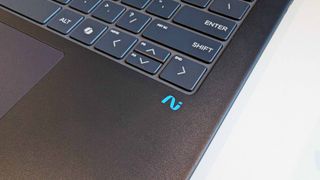
3. HP EliteBook Ultra G1q
Specifications
Reasons to buy
Reasons to avoid
Professionals who need a secure and sleek laptop will no doubt want to check out HP's EliteBook Ultra G1q. However, HP also has the OmniBook X 14, which is basically the same laptop minus a bunch of added business features. It's more affordable, and it comes in a sharp Ceramic White color finish.
The EliteBook Ultra G1q starts at a higher price due to its default inclusion of Windows 11 Pro, HP Wolf Pro Security with a one-year subscription to its antivirus, and 19 MIL-STD 810 durability certifications. It's also a Secured-Core PC. If you often deal with sensitive data, this is the way to go.
The system runs on a Snapdragon X Elite (X1E-78) chip with an 18W TDP, and you can get 16GB of LPDDR5x RAM and a 512GB M.2 PCIe 4.0 NVMe SSD. The 14-inch display is not OLED, but it has a crisp 2240x1400 (2.2K) resolution, 16:10 aspect ratio, touch functionality, and 100% sRGB color. Above the display is a 5MP webcam with an IR sensor and privacy shutter.
Ports include USB4, USB-C 3.2, USB-A 3.2, and 3.5mm audio; wireless connectivity is handled by Wi-Fi 6E or Wi-Fi 7 and modern Bluetooth.
See our analysis: HP OmniBook X 14 vs. EliteBook Ultra G1q: HP's Copilot+ laptops have one major difference that significantly skews pricing
Best bright screen
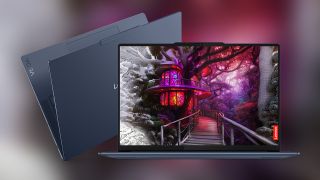
4. Lenovo Yoga Slim 7x (Gen 9)
Specifications
Reasons to buy
Reasons to avoid
Lenovo's Yoga Slim 7x, which Lenovo pegs as a Gen 9 model to keep up with its other Yoga devices, is a sleek laptop weighing in at just 2.82 pounds (1.28kg) and measuring 0.51 inches (12.9mm) thin. That's extra impressive considering it has an aluminum chassis with MIL-STD 810H durability certifications. The laptop has four 2W speakers with Dolby Atmos, pairing extremely well with the 14.5-inch touch display.
It uses an OLED panel with 100% DCI-P3 and sRGB color, it has Dolby Vision and VESA DisplayHDR True Black 600 certification, X-Rite factory calibration, and a 90Hz refresh rate. It even hits up to 1,000 nits brightness, making it a great option if you need a laptop with a bright screen. There is, however, no mention of inking support. The keyboard's 1.5mm key travel provides plenty of comfort even during long days of typing, and there's a large touchpad for easy pointing.
Lenovo chose the Snapdragon X Elite (X1E-78) SoC for the Yoga Slim 7x, and it's supported with up to 32GB of LPDDR5x RAM and up to a 1TB M.2 PCIe 4.0 NVMe SSD. It all runs on a sizable 70Wh battery to help keep up with the bright OLED display.
Best design
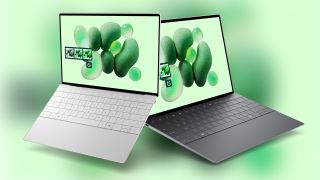
5. Dell XPS 13 (9345)
Specifications
Reasons to buy
Reasons to avoid
Dell overhauled its XPS lineup for 2024, bringing new XPS 14 and XPS 16 models to complement the flagship XPS 13 powered by Intel Core Ultra CPUs. But Dell wasn't done there; it announced the XPS 13 (9345) with a Snapdragon X Elite (X1E-80) SoC, up to 64GB of LPDDR5x RAM, and up to a 2TB M.2 PCIe 4.0 NVMe SSD.
The CNC-machined aluminum chassis has some interesting design choices that you may love or hate. The most noticeable is the lattice-free keyboard with keycaps lacking space between. Below the keyboard is a seamless glass palm rest that hides a haptic touchpad. Above the physical keys is a row of capacitive touch function buttons. This setup might take some getting used to — and might be too much for users who often use the function row or Escape key — but the result is a clean and futuristic look.
The laptop has four 2W speakers with Dolby Atmos for impressive audio, and above the screen is a 1080p webcam with an IR sensor for Windows Hello. Ports are very limited with just a couple of USB4, but a quality Thunderbolt dock or hub can mostly fix the issue.
The 13.4-inch display might be the most impressive piece of this laptop. It's available in three flavors, starting with the more affordable FHD+ non-touch option with a 120Hz refresh rate and 500 nits brightness. Next is a QHD+ resolution with touch functionality, 500 nits, 120Hz refresh rate, and an anti-reflective finish. And finally, the 3K OLED touch option brings the best color and contrast, with 400 nits brightness, a 60Hz refresh rate, and an anti-reflective finish. All displays feature Dolby Vision support.
See our analysis: Dell XPS 13 (9345) vs. XPS 13 (9340): Copilot+ AI features or proven Intel Core Ultra performance?
Best performance
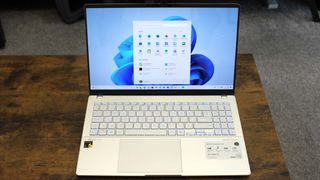

6. ASUS Vivobook S 15 (S5507)
Specifications
Reasons to buy
Reasons to avoid
The Asus Vivobook S 15 (S5507) is a standout Copilot+ PC for a couple of reasons. First, it's one of the only options that runs its Snapdragon X Elite (X1E-78) SoC at a full 45W TDP, delivering strong performance for standard processing and graphics. ASUS lists an X Plus configuration as well, but the initial launch looks to be limited to the X Elite chip along with 16GB of LPDDR5x RAM and a 1TB M.2 PCIe 4.0 NVMe SSD.
In our testing of the Vivobook S 15 (S5507), it was able to trade blows with Apple's M3 chip and also kept up with or surpassed Intel Core i7 and Core i9 chips in synthetic benchmarks. App emulation slowdown is no longer really an issue in most cases, though battery life does take a hit when emulating. Still, we saw more than 14 hours from the 70Wh battery in PCMark 10's Applications test. In real-world usage, it was able to last an entire workday and into the next while going about the usual web browsing, email, and office tasks.
The other standout feature is the 16:9 display aspect ratio in a time when most non-gaming PCs have made the move to a taller 16:10 or even 3:2 ratio. You don't get as much vertical space with which to work, but the screen is otherwise impressive.
In our ASUS Vivobook S 15 (S5507) review, Windows Central Senior Editor Zac Bowden called it "the star of the show" next to the new silicon. It measures 15.6 inches and has a 2880x1620 resolution, an OLED panel with awesome color and contrast, a dynamic 120Hz refresh rate, up to 600 nits brightness with HDR enabled, and VESA DisplayHDR True Black 600 certification.
The Vivobook's generous port selection should make it easy to connect accessories without needing a Thunderbolt dock. It has dual USB4, dual USB-A 3.2 (Gen 1), HDMI 2.1, a 3.5mm audio jack, and a microSD card reader. And if you're often dealing with spreadsheets, the number pad should come in handy.
ASUS includes a bunch of its own AI apps to complement the standard Copilot+ features. ASUS AiSense Camera adds some AI-powered security, while StoryCube can help manage digital assets.
See our review: ASUS VivoBook S 15 Copilot+ PC Review: Is the Snapdragon X Elite hype real?
See our analysis: ASUS Vivobook S 15 vs. Samsung Galaxy Book4 Edge: These Copilot+ PCs are slim and sleek, but you only need one
How to choose the best Copilot+ PC for you
Copilot+ PCs have only just entered the market, but they're already easily some of the best Windows on ARM laptops out there. And while there were quite a few Copilot+ PCs announced on May 20, we've picked the six best options for most users.

• Best Windows on ARM laptops
• Windows on ARM FAQ
• Windows 11 apps run on ARM
• I'm obsessed with Windows on ARM
At the top of the list is Microsoft's Surface Pro 11. It's the most versatile option thanks to its 2-in-1 design with a detachable keyboard and built-in stand; you can use it as a tablet or as a notebook depending on your workflow. The best part aside from the X Elite and X Plus chips is likely the addition of an OLED touch display option, bringing outstanding color and contrast with a crisp 2.8K resolution and 120Hz refresh rate.
If you're in search of a business PC, HP's EliteBook Ultra G1q has some impressive security and manageability perks for professionals. For a thin and light PC, Lenovo's Yoga Slim 7x (Gen 9) should be great for creative work or media consumption, while Samsung's Galaxy Book4 Edge is a top alternative to the MacBook Pro for anyone who wants to give Windows on ARM a go.
Dell's XPS 13 (9345) remains the Copilot+ PC with the best design, though you'll have to get used to the seamless haptic glass touchpad, lattice-free keyboard, and capacitive touch buttons along the function row. And finally, the ASUS Vivobook S 15 (S5507) brings impressive performance thanks to a Snapdragon X Elite running at a full 45W TDP. It's the first Copilot+ PC we reviewed, and we were so impressed that we gave it a Windows Central Best Award.
What is Copilot+ and how does it differ from an AI PC?
Deciphering all the new terms surrounding 2024's laptop and PC landscape isn't always easy. AI PCs containing a Neural Processing Unit (NPU) kicked the year off in a big way, with Microsoft and Qualcomm taking things to the next level a few months later with Copilot+.
Copilot+ is an umbrella term for a set of advanced AI features in Windows 11, as well as laptops with the ability to run the features locally. The first wave of Copilot+ PCs are all powered by a Snapdragon X Elite or Snapdragon X Plus ARM64 SoC, though that will eventually change as Intel, AMD, and NVIDIA get on board later this year or in early 2025.
All Copilot+ PCs are technically AI PCs, though the reverse is not true. Some of the best AI PCs do not make the cut for Copilot+ due to their not having an NPU with enough power. The current benchmark set by Microsoft is an NPU with 40 TOPS of power, surpassed by Qualcomm's Snapdragon X NPU with 45 TOPS.
So why buy a Copilot+ PC? As it stands now, it means you're getting your hands on Qualcomm's impressive ARM64 chips with strong performance and efficiency. For many people, the Copilot+ perks — including things like Live Caption, advanced Windows Studio Effects, local image and text creation through Cocreator, and the delayed Windows Recall — will be secondary to design and performance appeal.
Are Copilot+ PCs good for gaming?
Qualcomm's Snapdragon X Elite and X Plus SoCs are equipped with an Adreno integrated GPU capable of either 4.6 TFLOPs (in the X1E-84 chip) or 3.8 TFLOPs (in the other chips. To put that into perspective, the Xbox Series S is capable of 4 TFLOPs.
These numbers are really only a small part of a larger story. As covered by Senior Editor Richard Devine, Snapdragon X gaming compatibility and performance is likely "going to blow your mind." Will it rival a high-end gaming laptop's experience? No, but that's not what Copilot+ PCs are made for.
Nevertheless, with more than 1,300 compatible titles listed on the WorksOnWoA website and evidence of the X Elite being able to play Baldur's Gate 3 at a respectable level, most Copilot+ PCs should be able to accommodate some lighter gaming when the focus is off of AI and productivity.
One of the new Copilot+ features is Auto Super Resolution, a tool baked right into Windows 11. It's basically Microsoft's answer to NVIDIA DLSS, AMD FSR, and Intel XeSS, leveraging NPU power for real-time AI upscaling.
Get the Windows Central Newsletter
All the latest news, reviews, and guides for Windows and Xbox diehards.

Cale Hunt brings to Windows Central more than eight years of experience writing about laptops, PCs, accessories, games, and beyond. If it runs Windows or in some way complements the hardware, there’s a good chance he knows about it, has written about it, or is already busy testing it.